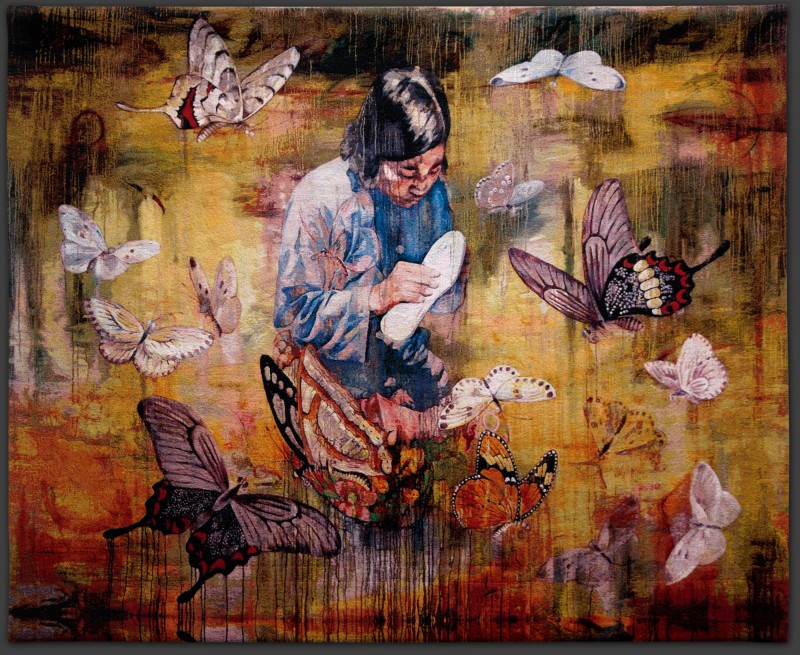
Jacquard tapestry
59 x 72 in.
edition of 12
Chinese history has always been the essence of Hung Liu’s work: raised in Beijing during Mao’s Great Leap Forward and trained in the Social Realist tradition, Liu now uses painting as a means to reanimate historical photographs. “I hope to wash the subject of its exotic ‘otherness,’” she writes, “and reveal it as a dignified, even mythic figure.” Liu’s tapestry Madame Shoemaker finds the exalted and the serene in a forgotten moment from the first half of the 20th century, revealing the beauty and heroism in the labors of an anonymous woman from China’s past.
Like many of Liu’s works, this tapestry edition is based on a painting which was in turn based on a historical photograph: in this case, a scene of women from a village in the Chinese countryside, who made shoes, clothing, and other supplies for anti-Japanese fighters during the second World War. For Madame Shoemaker, Liu singled out one of the women, finding a personal connection: “Making shoes for your family is a Chinese tradition,” explains Liu, “my grandmother made shoes for me when I was young: I remember watching her slowly make each part by hand from a tough, strong hemp and sewing them together, little by little.” The artist likens this activity both to a meditative state and to the practice of making art in general: putting time in day by day, slowly accumulating work to see a project through to completion. The woman depicted thus becomes an avatar both for Liu herself and for the universal power of feminine creativity and strength.
The tapestry’s title, explains Liu, was inspired by the butterflies surrounding the figure; these colorful creatures are based on traditional Chinese paintings of butterflies on silk from the 10th and 12th centuries, and reminded the artist of the opera “Madame Butterfly.” However, Liu is quick to point out that her Madame is “more blue collar, stronger and happier” than that opera’s helpless, tragic heroine. She is demure, but no less strong and significant than the soldiers who will receive the shoes she makes: “It’s important to remember when looking back at the war,” says Liu, “that there was not just a ‘band of brothers’ but also a whole band of sisters standing behind them.”
-Nick Stone
show prices
Prices and availability are subject to change without notice.The copyright of all art images belongs to the individual artists and Magnolia Editions, Inc.
©2003-2026 Magnolia Editions, Inc. All rights reserved. contact us
